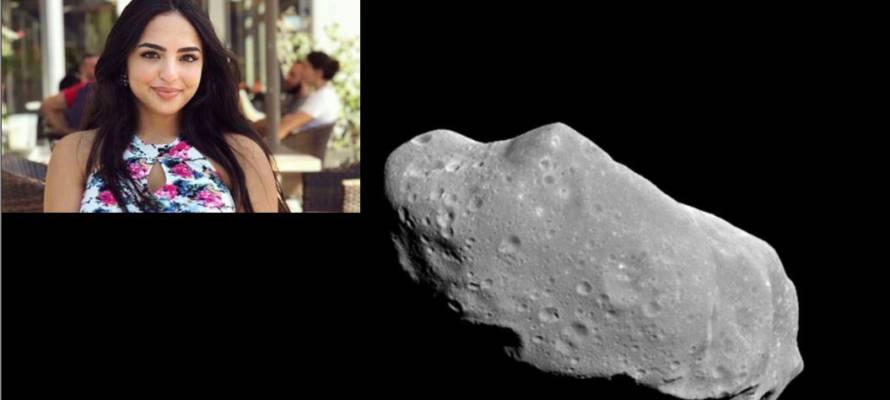An Israeli undergrad working on her own discovered two asteroids, earning a major honor from NASA!
By Yakir Benzion, United With Israel
NASA has named two recently discovered asteroids after an enterprising young undergraduate student at Israel’s Technion who used a special technique to find them, the university announced.
In a certificate presented to her by the International Astronomical Search Collaboration, Aseel Nama was honored for her “valuable contributions to observations of near-Earth objects and Main Belt asteroids.”
It’s part of the National Aeronautics and Space Administration’s (NASA) asteroid hunting campaign in which people from around the world are given NASA photographs to analyze.
“I really wanted to take part in this campaign, which is a kind of competition, but NASA insisted that I must recruit a team of three people,” said Nama, a student from the Israeli Arab town of Deir Al-Assad in the central Galilee, about 30 kilometers (18 miles) northeast of Haifa.
“I explained to them that I could not recruit partners, but this is my dream, and in the end they were convinced and allowed me to participate,” Nama said. “It turned out that I was the only team of one person and also the only Israeli among 116 teams from all over the world.”
Nama currently lives in Haifa, where the Technion – one of the world’s top engineering universities – is located. She did her research under the supervision of Prof. Dan Adam using a technique called segmentation – dividing images into sections, which she says helped her locate the asteroids.
“I received a set of photos and videos from NASA and I had to find new asteroids in them,” Nama said. I called my ‘team’ ANI (the acronym of Aseel Nama Israel) and the asteroids I discovered will be called ANI1801 and ANI2001.”
The Technion is heavily involved in space research. Last month a team from the university successfully launched three satellites into orbit on a Russian Soyuz rocket.
The satellites, which will fly in an autonomous formation without human intervention, are tasked with receiving signals from Earth and detecting their precise location for search and rescue, remote sensing, and environmental monitoring missions.
The goal is to demonstrate that multiple satellites can orbit for a long time in formation autonomously and that by working together, the satellites can precisely determine the position of a transmitter located on earth.
